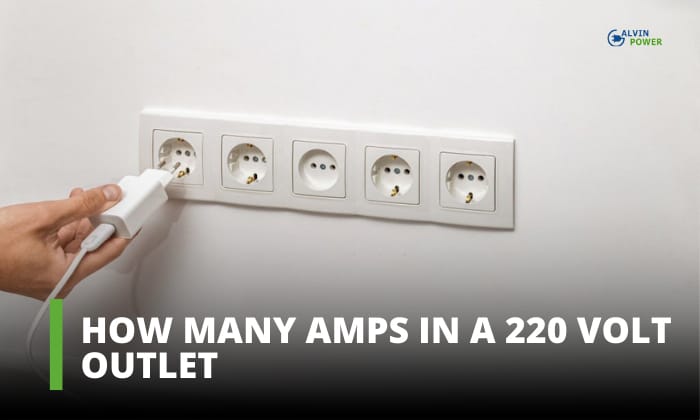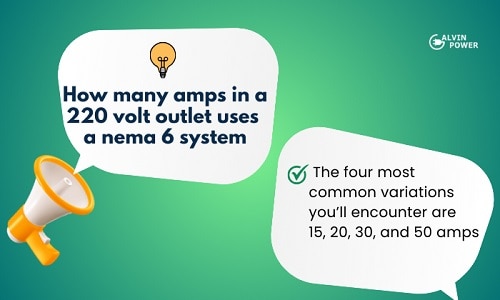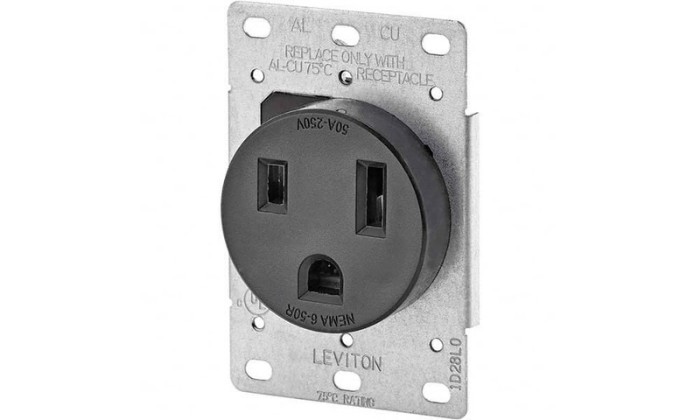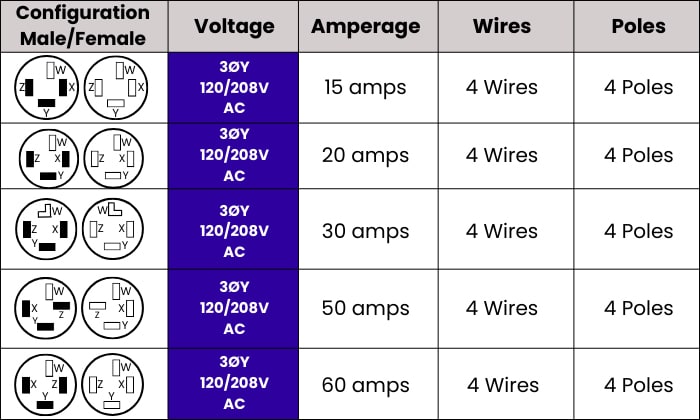Have you ever thought about how your home’s electrical system meets the needs of numerous equipment, from your dependable refrigerator to that powerful table saw? This curiosity often leads to understanding how many amps in a 220 volt outlet.
As a standard, a 220-volt outlet uses a Nema 6 system, which varies depending on the size of the breaker. The four most common variations you’ll encounter are 15, 20, 30, and 50 amps.
Without this awareness, you risk causing electrical damage to your valuable products. In this article, let’s talk more about 220v current draw and how different appliances may require this amp rating.
Table of Contents
Amp Rating for 220-Volt Outlets
A 220-volt household outlet is a specialized electrical outlet designed to supply high-power appliances in our home. In the US, this is necessary to power larger appliances and equipment that require more energy, like power tools, water heaters, air conditioners, and welding machines.
You should keep in mind that for a 220v wall outlet voltage, we usually use a Nema 6 outlet with different amp ratings, depending on the power rating of the appliances and the size of the breaker.
Below, we provide a chart outlining some common amp ratings for 220 standard outlet voltage:
| Types of 220V outlets | Voltage | Amperage | Wire |
| Nema 6-15 | 220v | 15 amps | 3 (2 Hot – 1 Ground) |
| Nema 6-20 | 220v | 20 amps | 3 (2 Hot – 1 Ground) |
| Nema 6-30 | 220v | 30 amps | 3 (2 Hot – 1 Ground) |
| Nema 6-50 | 220v | 50 amps | 3 (2 Hot – 1 Ground) |
Understanding the amp ratings of a 220v single phase plug is crucial for matching the outlet to the electrical needs of your appliances.
How Different Appliances Demand Various Amp Ratings
Appliances that run on a 220-volt circuit require a suitable amp of outlet for each power rating. As such, different appliances have varying amp requirements and types of 220 plugs, determined by power consumption, heating elements, and cooling capacity.
You must also pay attention to the wire conductors, which have a maximum ampacity that indicates the amount of current they may safely carry without overheating. Thicker wires have a better capacity to handle current than their thinner counterparts.
To get a general idea of how different appliances call for different amp rating and wire conductors, check out the table below:
| Amp rating | Appliances | Wire gauge (Copper wire)(10-foot length) |
| 15 amps | Commercial air conditioners
Dryers Washers |
11 AWG |
| 20 amps | Large power tools
Wall-type air conditioners |
10 AWG |
| 30 amps | Dryers
Cooking ranges Window-type air conditioners |
8 AWG |
| 50 amps | Stoves
Ovens Stove-oven combos |
6 AWG |
To ensure safety and operational efficiency, the amp rating of an electrical circuit, which includes receptacles, wiring, and circuit breakers, must match the power requirements of the appliance.
For instance, a window-type air conditioner requires a 30-amp circuit, so it’ll need a 3 prong NEMA 6-30 outlet, a 30-amp breaker, and a minimum wire size of 8 gauge.
How to Calculate the Amps Rating of a 220v Outlet
Calculating the 220v amperage outlet is straightforward—it involves a simple formula that relates power (watts) to voltage (volts) and current (amps).
Here’s what you need to do:
- First, you must determine the power rating of the appliance or equipment connected to the 220-volt outlet.
This information is usually found on a label or in the owner’s manual for the appliance. Watts (W) are used to measure power.
- Next, identify the house voltage (Volts). In this case, the voltage is 220 volts.
- Then, calculate the amp rating of a 220-volt outlet with a specific appliance using the formula:
\[ \frac{\text{Watts}}{\text{Volts}} = \text{Amps} \]
- For example, let’s say you have a circular saw with a power rating of 1500 watts and a voltage rating of 220v. The actual current draw can be calculated using the given formula:
\[ \text{Amps} = \frac{1500}{220\, \text{V}} = 6.81\, \text{amps} \]
So, in this example, the appliance would draw 6.81 amps of current when connected to the 220-volt outlet.
This calculation helps you ensure that the appliance you’re connecting is compatible with the amps of outlet with a 220v rating. It’s crucial to match the outlet’s amp rating to the appliance’s current requirements to prevent overloading the circuit and ensure safe and efficient operation.
Conclusion
Understanding how many amps in a 220 volt outlet is critical for ensuring that your electrical appliances operate safely and efficiently. Different appliances have different amp requirements, so it’s crucial to match the amp rating of the outlet to the needs of the equipment.
By doing this, you can avoid overloading circuits, limit the danger of electrical damage, and ensure that your equipment performs efficiently. Remember, whether you use AC or DC power, knowing your outlet voltage and amp ratings is critical to keeping your home’s electrical system functioning and safe.

I am Edwin Jones, in charge of designing content for Galvinpower. I aspire to use my experiences in marketing to create reliable and necessary information to help our readers. It has been fun to work with Andrew and apply his incredible knowledge to our content.




